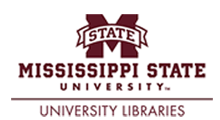This class includes prints from the nineteenth, twentieth and twenty first centuries. Many prints are in color while others are black and white.
-

Dat Fite Mit Siegel (from Confederate War Etchings)
Adalbert John Volck
Volck's image depicts a burning house. Two children are shown trapped on the house's roof. Union soldiers stand outside, while a women shown begging on her knees pleas with the officers. A soldier stands behind her with his hands holding the ties of her torn corset. A man, dressed in strange attire, stands the the right of the image and points a gun at the children on the roof. Amid the chaos, an American flag waves in the scene.
-

First Reading of the Emancipation Proclamation by President Lincoln
Francis Bicknell Carpenter
The photolithograph depicts an reenactment of Abraham Lincoln signing the Emancipation Proclamation on July 22, 1862. The print is based on a painting completed by Francis B. Carpenter in 1864. The following individuals surround Lincoln (left to right): Edwin M. Stanton, Secretary of War, Salmon P. Chase, Secretary of the Treasury, President Lincoln, Gideon Welles, Secretary of the Navy, Caleb B. Smith, Secretary of the Interior, William H. Seward, Secretary of State, Montgomery Blair, Postmaster General, and Edward Bates, Attorney General. Simon Cameron and Andrew Jackson. No creator information is noted for the print's lithographer.
-

Formation of Guerrilla Bands (from Confederate War Etchings)
Adalbert John Volck
The etching depicts a farmer, his wife, and child outside of their home that has been destroyed by Union forces. An angry man stands at the center of the image and attempts to persuade the farmer to join the guerrilla band (pictured in the background) to seek out revenge on the offenders. The band in the background carry a banner.
-

Gen. Scott Taking Leave of the President & Cabinet
John Rogers
The engraving features a black and white image of President Abraham Lincoln and his cabinet members looking at a standing General Winfield Scott, who resigned as commanding general on November 1, 1861. The engraving was created especially for Orville J. Victor's Comprehensive History of the Southern Rebellion and the War for the Union.
-

Return of a Raiding Party from Pennsylvania (from Confederate War Etchings)
Adalbert John Volck
In the etching, the results of a Confederate cavalry raid are shown. The raid was apparently successful because soldiers are shown leading several heads of livestock, including cattle and pigs. A wagon train is also shown in the background.
-

John C. Fremont, Republican Candidate for Fifteenth President of the United States
Nathaniel Currier and Mathew Brady
The color lithograph depicts a seated portrait of the first Republican presidential candidate, John C. Frémont. Frémont is dressed in a suit and tie and is seated at a quarter turn to his proper left.
-

Making Clothes for the Boys in the Army (from Confederate War Etchings)
Adalbert John Volck
The etching depicts a domestic, patriotic scene where three Southern women make clothing in a small bedroom. It is intended to show the sacrifice women made on behalf of the war effort. One woman creates thread from raw material. Another weaves the thread into cloth. The third woman sews the material into garments to be worn by Confederate soldiers.
-

Engraved Portrait of Abraham Lincoln
The engraving depicts a small bust portrait of a bearded Abraham Lincoln. It is printed in black ink and on off-white paper.
-

Stone Blockade of Charleston, S.C. (from Confederate War Etchings)
Adalbert John Volck
Volck's etching depicts the route leading to Charleston Harbor. In the image, several sunken ships are shown.
-

Cave Life in Vicksburg during the Siege (from Confederate War Etchings)
Adalbert John Volck
The etching references the usage of caves as shelters during the siege of Vicksburg in 1863. In the image, a woman kneels in prayer inside of a cave. Domestic items surround her including a broom, ottoman, silver, and trunk. A bed is situated in the far right corner.
-

Jamison's Jayhawkers (from Confederate War Etchings)
Adalbert John Volck
In the image Charles ""Doc"" Jennison, the leader of the 7th Kansas Volunteer Cavalry, (i.e., Jennison's Jayhawkers) is shown leading a raid on a Confederate sympathizer's home. Men are shown burning structures, stealing animals, shooting inhabitants. Jennison is shown riding a horse with a bare-breasted woman slung across his saddle. The image is meant to showcase the brutality of the Union Jayhawkers.
-

Worship of the North (from Confederate War Etchings)
Adalbert John Volck
In the etching, Volck criticizes the Union cause by depicting several key people gathered around an altar performing a ritual, literally built upon Negro Worship, Free Love, Witchburning, Socialism, Atheism, Rationalism, and Puritanism. Well-known individuals depicted include a devil-like Abraham Lincoln, Henry Ward Beecher, Horace Greely, and Charles Sumner. A crowd of Union sympathizers look on at the ritual. A group of representatives from the Holy Cause of the Contractors stand in the far distance of the image, representing the Confederacy's belief that the North was profiting off of the war on the South.
-

Battle in Baltimore, April 19th, 1861 (from Confederate War Etchings)
Adalbert John Volck
The etching depicts the Baltimore Riot of 1861, when Confederate sympathizers attacked the 6th Massachusetts Militia as they marched en route to Washington D.C.
-

William Shakespeare Engraved by Hollis from the Chandos Portrait
T. Hollis, John Taylor, and John Tallis and Company
The engraving features an oval portrait of William Shakespeare that was crafted after what is known as the Chandos Portrait of William Shakespeare. Surrounding the central image are smaller portraits of 19th century Shakespearian actors: Edward Loomis Davenport, Charlotte Cushman, Mary Amelia Warner, and William Macready. A fifth smaller image depicts a scene from the Shakespeare Jubilee. The engraving appears to have been taken from a bound volume, most likely John Tallis & Company's The Works of Williams Shakespeare Illustrated.
-

Smuggling Medicines into the South (from Confederate War Etchings)
Adalbert John Volck
The image depicts a group of four men (civilian and military) unloading medical supplies from a small boat. A fifth man, dressed in gentlemanly attire, is shown climbing down from a tree perch. Volck, who was a Confederate sympathizer, actively took part in similar efforts to smuggle medical supplies across the Potomac River.
-
![Free [redacted] in the North (from Confederate War Etchings) by Adalbert John Volck Free [redacted] in the North (from Confederate War Etchings) by Adalbert John Volck](https://scholarsjunction.msstate.edu/fvw-prints/1135/thumbnail.jpg)
Free [redacted] in the North (from Confederate War Etchings)
Adalbert John Volck
The etching captures Volck's stance on the North's hypocrisy toward the treatment of black individuals. The scene takes place on Lovely Lane outside of a building where dancing and fighting takes place. The etching also depicts a well-dressed man assumed to be Henry Ward Beecher (a pastor and abolitionist) who denies help to a beggar in the streets. Instead, he hands the beggar a religious tract. Also pictured are two black men who are grave robbers. A wealthy-looking white man pays them for a corpse.
-

Passage through Baltimore (from Confederate War Etchings)
Adalbert John Volck
In the print, Volck criticizes Abraham Lincoln for making the trip to his 1861 inauguration in secret. At the time, there were rumors of an assassination plot brewing in Baltimore, and Lincoln was encourage to travel in secret at night, advice that Lincoln reluctantly took and later regretted.
-

Offering of Bells to be Cast into Cannon (from Confederate War Etchings)
Adalbert John Volck
The print shows pastors offering their church bells to be melted and used as raw materials for war weapons. A slave is shown in the foreground unloading a bell at the feet of a Confederate officer. Appearing in the lower left corner of the image are two sets of initials, EBM and AJV, the latter belonging to Volck. This is one of the only etchings showcasing Volck's initials.
-

Election in Baltimore, November 1862 (from Confederate War Etchings)
Adalbert John Volck
The image shows Federal troops facilitating an election. The troops are shown encouraging lower-class voters, while intimidating those of the more respectable class. Many Union sympathizers within the crowd hold signs, and Baltimore's George Washington Monument may be seen in the background.
-

Prayer in Stonewall Jackson's Camp (from Confederate War Etchings)
Adalbert John Volck
The etching depicts Stonewall Jackson delivering a sermon in a Confederate army camp. A group of Confederate servicemen, including an African-American man, kneel in prayer around him. According to the Gilder Lehrman Institute of American History, Volck created the etching from his sketch of this event at Ball's Bluff in Virginia.
-

Bombardment of For Sumter, Charleston Harbor. From Fort Moultrie, 12th & 13th of April 1861.
Currier and Ives
The color lithograph depicts the siege of Fort Sumter, the battle that started the American Civil War. In the image, soldiers aim fire at Fort Sumter from Fort Moultrie. Two cannons blast fire in the foreground. The South Carolina state flag stands on the bank of the water to the left of the image. The American flag can be see flying above Fort Sumter in the image's background.
-

Home of Abraham Lincoln at Springfield
The print is a black and white image of Abraham Lincoln's family home in Spring Field, Illinois. Lincoln and one of his sons stand just outside of the home inside the surrounding fence. Three men and three women stand on perimeter of the home. The image is printed on off-white paper. No creator or publication information is included.
-

Washington & Lincoln (Apotheosis)
The memorial print depicts George Washington welcoming Abraham Lincoln into heaven with a laurel wreath. A break in the clouds pictured in the sky reveals angels and a ray of light that shines down on the two Presidents. [Ref: see O-pg. 242].
-

A. Lincoln Color Engraving
John Chester Buttre and Mathew Brady
The color engraving features a portrait of Abraham Lincoln. The portrait appears in an oval on off-white paper. Below the image is a facsimile of Lincoln's signature.
-

President Lincoln Engraving
Daniel John Pound and Mathew Brady
The engraving features a black and white standing portrait of Abraham Lincoln. It is printed on off-white paper. Ref: O-17.



